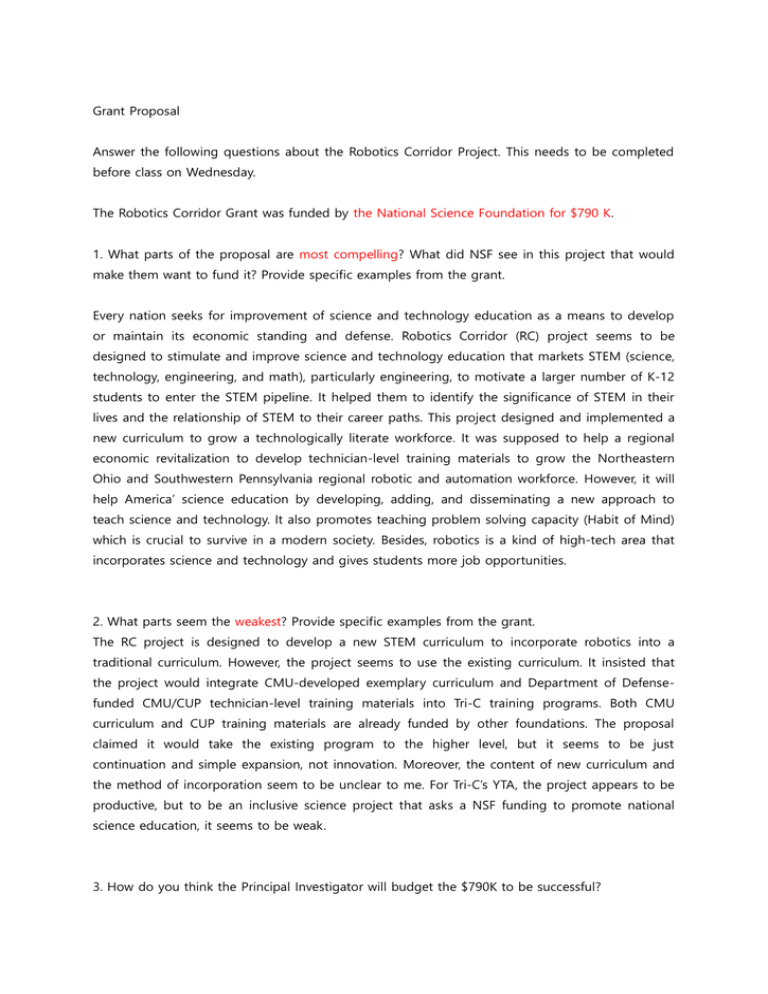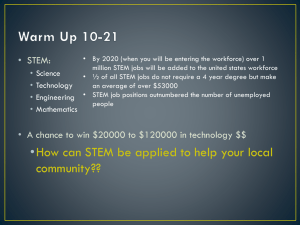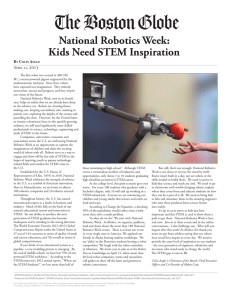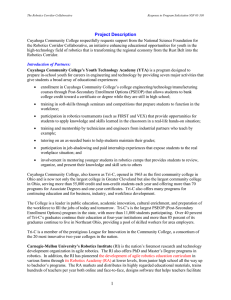The Analysis of Proposal of the Robotics Corridor Project
advertisement

Grant Proposal Answer the following questions about the Robotics Corridor Project. This needs to be completed before class on Wednesday. The Robotics Corridor Grant was funded by the National Science Foundation for $790 K. 1. What parts of the proposal are most compelling? What did NSF see in this project that would make them want to fund it? Provide specific examples from the grant. Every nation seeks for improvement of science and technology education as a means to develop or maintain its economic standing and defense. Robotics Corridor (RC) project seems to be designed to stimulate and improve science and technology education that markets STEM (science, technology, engineering, and math), particularly engineering, to motivate a larger number of K-12 students to enter the STEM pipeline. It helped them to identify the significance of STEM in their lives and the relationship of STEM to their career paths. This project designed and implemented a new curriculum to grow a technologically literate workforce. It was supposed to help a regional economic revitalization to develop technician-level training materials to grow the Northeastern Ohio and Southwestern Pennsylvania regional robotic and automation workforce. However, it will help America’ science education by developing, adding, and disseminating a new approach to teach science and technology. It also promotes teaching problem solving capacity (Habit of Mind) which is crucial to survive in a modern society. Besides, robotics is a kind of high-tech area that incorporates science and technology and gives students more job opportunities. 2. What parts seem the weakest? Provide specific examples from the grant. The RC project is designed to develop a new STEM curriculum to incorporate robotics into a traditional curriculum. However, the project seems to use the existing curriculum. It insisted that the project would integrate CMU-developed exemplary curriculum and Department of Defensefunded CMU/CUP technician-level training materials into Tri-C training programs. Both CMU curriculum and CUP training materials are already funded by other foundations. The proposal claimed it would take the existing program to the higher level, but it seems to be just continuation and simple expansion, not innovation. Moreover, the content of new curriculum and the method of incorporation seem to be unclear to me. For Tri-C’s YTA, the project appears to be productive, but to be an inclusive science project that asks a NSF funding to promote national science education, it seems to be weak. 3. How do you think the Principal Investigator will budget the $790K to be successful? It is silly but happens all the time that most of funding budget goes into the management of the project. However, the key points that make this project successful are the development of a new curriculum and teaching programs, and the professional development which influences the quality of their implementation. If I were the Principal Investigator, I would invest big portion of budget into these two things. First, I would make a plan to hire research people who are qualified for the development of curriculum. The capacity of those people shapes the quality of curriculum. Second, I would make a strong effort to recruit more competent teachers who will participate in the program, including the professional development. The more the teachers are competent, the more the project will be successful. 4. What is the likelihood that the project will continue once the money is gone in three years? As usual, the sustainability of every project depends on the productivity of its results. Once the curriculum and programs become stable with the funding from NSF, the project doesn’t require much money to maintain. The tuition from the participant will provide the money to manage the program. If the program helps young students get jobs in the high-tech industry, they would pay the tuition. If it is supposed to be free, the support from the regional industry can help the program sustain when the students who finish the program can meet the demand of regional industry. If the graduates prove their ability to perform the job effectively in their work places, the regional industry will continue to support the program to keep the pool of workforce for them.



